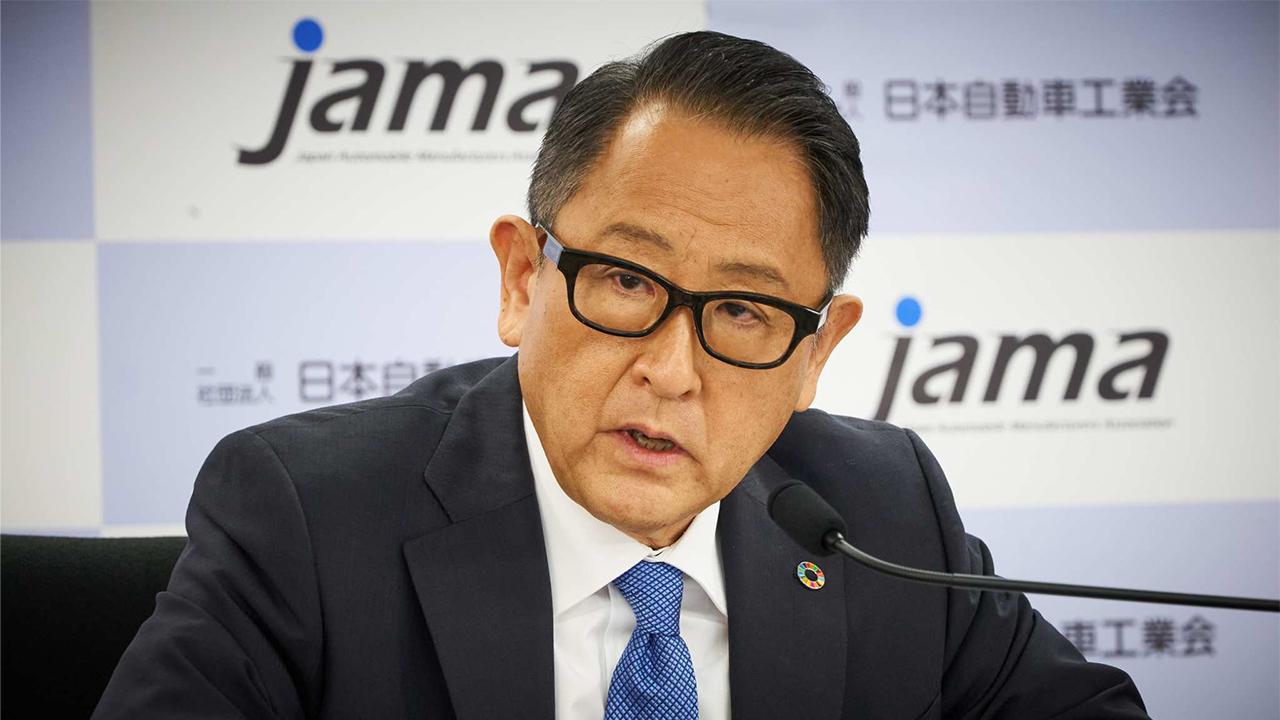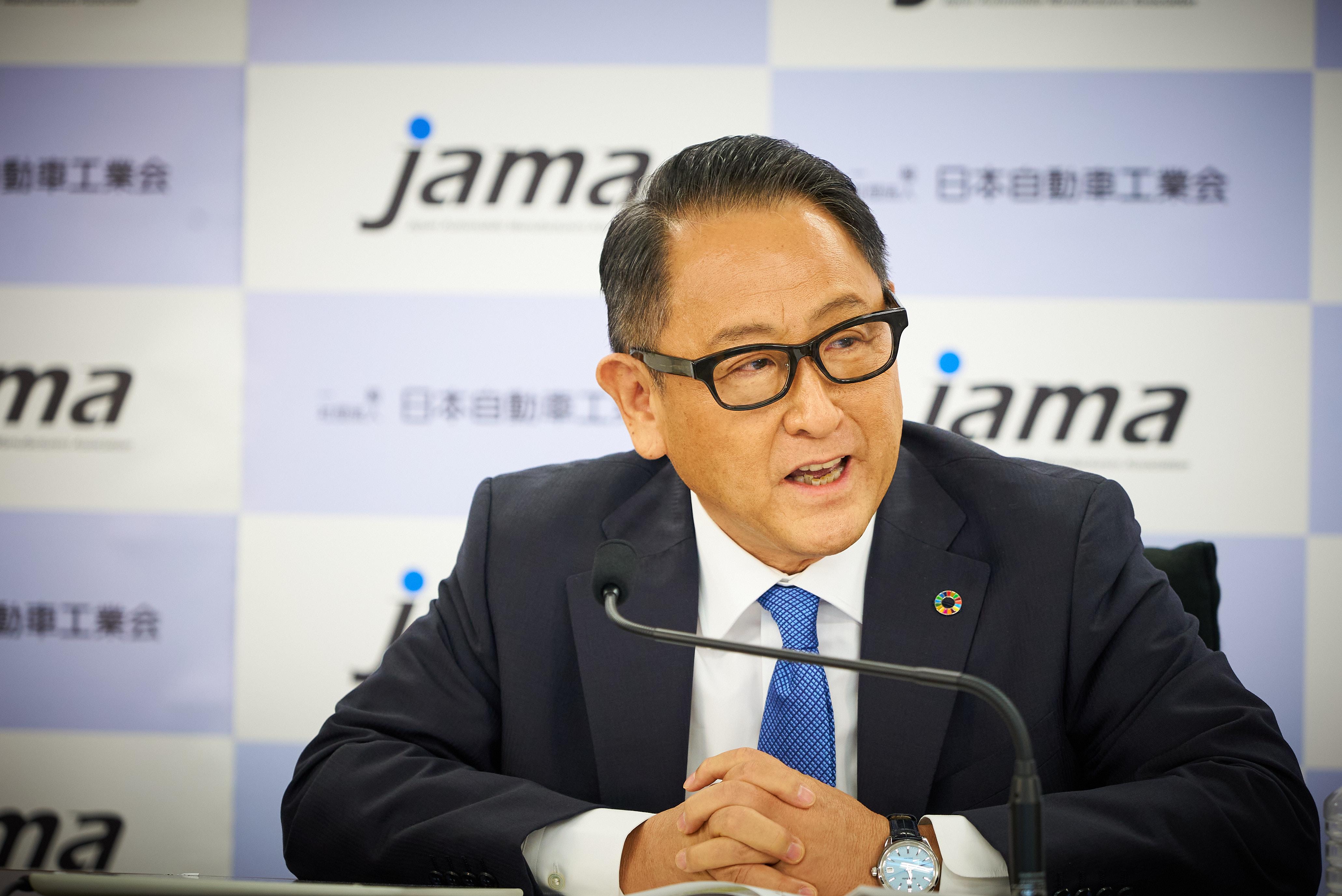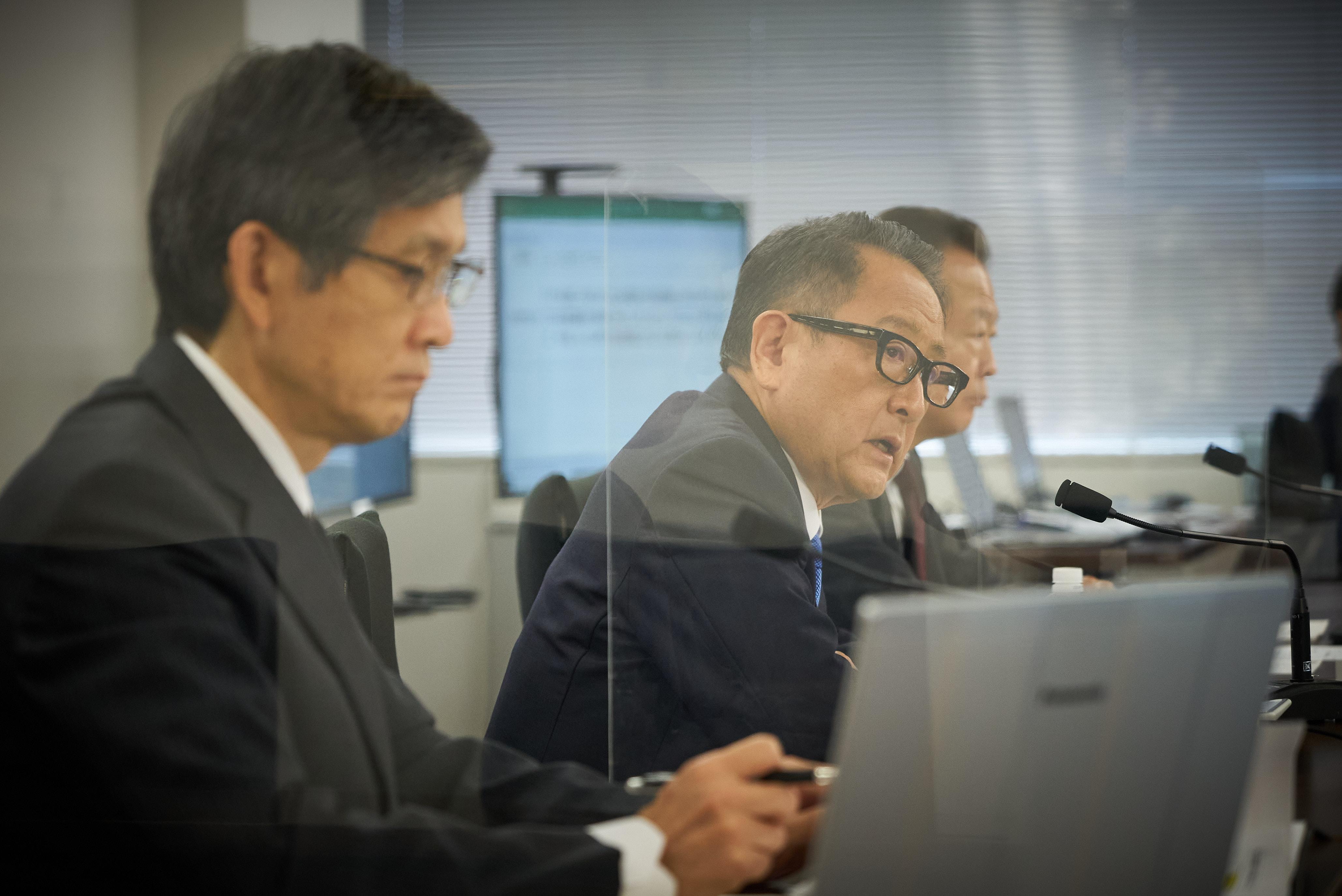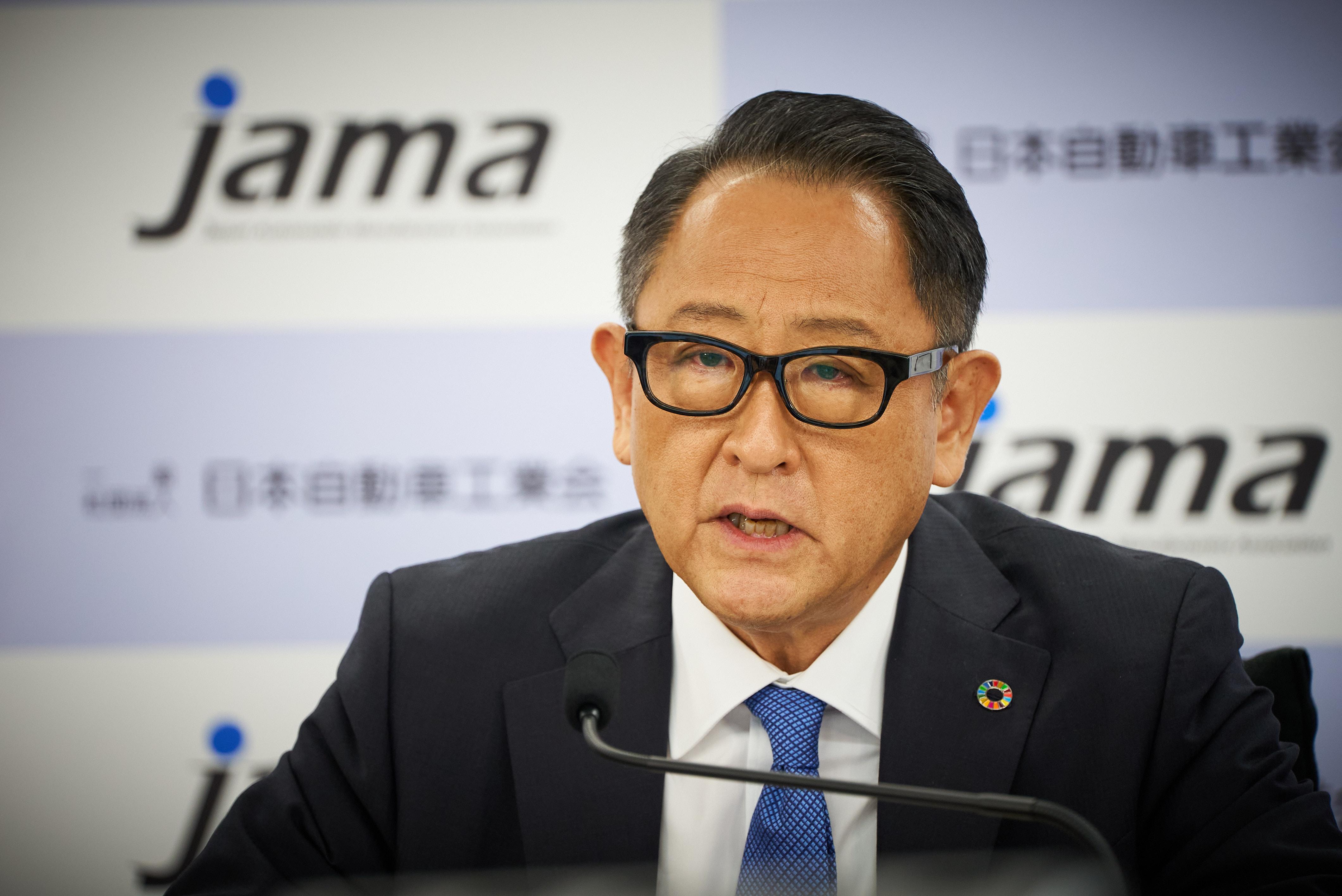
As various policy-making discussions are underway, JAMA Chairman Akio Toyoda sent a message on carbon neutrality at a press conference on September 9, which represented how seriously the Japanese automotive industry is facing the global climate issue.

On September 9, the Japan Automobile Manufacturers Association (JAMA) press conference was held online. Joining Chairman Akio Toyoda were Vice Chairman Toshiaki Mikoshiba (chairman of Honda Motor Co., Ltd), Vice Chairman Yoshihiro Hidaka (president of Yamaha Motor Co., Ltd.), Vice Chairman Masanori Katayama (president of Isuzu Motors Ltd.), and Vice Chairman Seiichi Nagatsuka.
The main topic of the press conference was carbon neutrality, which has been one of the most important agendas for the automotive industry and the world. As various policy-making discussions are underway, how is the Japanese automotive industry facing the global issue? JAMA executives shared their earnest thoughts.
Use learnings from the Paralympics for the future
Firstly, Akio started his remarks by sharing his impressions on the Tokyo 2020 Paralympic Games, in which some members of the automotive industry were supporting its operation.
Akio
Following on from the Olympic Games Tokyo 2020, the Tokyo 2020 Paralympic Games have recently drawn to a close. I believe many people were moved by the unique stories of para-athletes who embraced their unique conditions and tackled the challenge as only they could.
After their competitions, the athletes shared their gratitude for this opportunity of competing in the Games, for the cheering, and for the support by everyone on the operational ground.

Behind the scenes, countless volunteers and staff worked hard to make the event possible. Among them were some of our 5.5 million auto industry colleagues. What the athletes and people on the ground showed us was a desire to serve someone other than themselves. I believe that sentiment is the true legacy of these Games.
Also, as an automotive company, we want to continue working towards a mobility society that solves the social and technical challenges which the Paralympics brought to light.
Carbon is our enemy; internal combustion engines aren’t
Akio moved on to talk about carbon neutrality.
Akio
With that, today I would like to share our current thoughts on carbon neutrality.
As COP26 approaches in November, representatives from each country have pledged various targets. To reach these goals, some have targeted cars, which is just one last process of CO2 emissions, and moved toward restricting some available options.
In pursuing carbon neutrality, carbon is our enemy, not the internal combustion engine. To reduce carbon, I believe there should be practical and sustainable solutions that fit the circumstances of each country and region.
I also believe that taking action toward our goals is more important than setting them. The Japan Automobile Manufacturers Association is working towards carbon neutrality, by drawing on our country’s strength in offering a full lineup of electrified vehicles. Establishing task forces based on the specialties of member companies, we have identified the challenges and engaged in discussions with relevant government agencies.
Each company is also speeding up efforts to expand technology options through new partnerships and practical trials.
As an early proponent of electrified vehicles, Japan’s automotive industry has been able to cut CO2 emissions by 23 percent over the past 20 years, an extremely high level by international standards.
What we need to do over the next several years is to leverage the technological advantages that we have built up and take immediate steps to maximize CO2 reductions using the electrified vehicles we have now. Any leeway that cars are able to generate in the process may allow to put more time and resources towards technological innovation in other industries.
Based on that thinking, I believe that exploring options which fit with our country’s circumstances is both a practical and fundamentally Japanese approach.
Carbon neutrality is an issue tied to employment
Akio then shared his thoughts that carbon neutrality is an issue related to preserving employment in Japan, not just the environment, while sharing some data that shows the automotive industry’s contributions to the society.
Akio
As I have said previously, we must not forget that, for an export-driven country like Japan, the issue of carbon neutrality is also tied to employment.
The reason we continue striving to expand options for achieving carbon neutrality is that we are responsible for 5.5 million auto industry jobs, and hence the lives and livelihoods of Japanese people.
Akio then touched on the Liberal Democratic Party’s presidential election that has recently caught people’s attention.
Akio
The Liberal Democratic Party’s presidential election is looming. Some politicians have previously claimed that all cars should simply be battery electric vehicles, or that manufacturing is an old legacy. To these points, I disagree.
It’s easy to dismiss efforts by saying that our present course holds no future. But I believe that in order to protect the lives and livelihoods of Japanese people, we need to create a future that builds on the efforts of those who came before, as well as those of us living in the present – to ensure that the course we have charted has a future.
This is our role, our responsibility, as one of the core industries that have continued to underpin Japan’s prosperity.

What I have come to keenly realize is that, given how closely cars are connected with people’s lives and many other industries, focusing on the auto industry can provide us with a better understanding of the challenges and timelines we face even in tackling carbon neutrality.
Clarifying these challenges and timelines can spur action on various fronts. That is why, next month, we plan to present the challenges related to energy, which is the starting point towards carbon neutrality, from the automotive industry’s perspectives, with a focus on practicality and sustainability.
We hope this will drive action across all steps in the auto industry – production, transport, and use. We will continue to take action and make our efforts as a core Japanese industry and a pacemaker in the push towards carbon neutrality. I would like to ask for your continued support for our efforts. Thank you.
The part Akio spoke emphatically was where he disagreed to the statements that say “all cars should simply be battery electric vehicles” and “manufacturing is an old legacy”. As chairman of JAMA, Akio has repeatedly asked for correct understandings on these points, but he felt that he hasn’t achieved the understandings yet even among some leaders of Japan.
The path for carbon neutrality is different in each country and region because energy situations and how people use cars are different. And the steps forward should not be taken at the sacrifices of people living in the country and industries supporting their lives. As a leader representing the automotive industry, Akio urged that these should be the unwavering principles in guiding the country for the future.
A significant impact on economy and employment if domestic production is abandoned
Following the remarks was a Q&A session with reporters. The first reporter asked Akio to elaborate on his intention in saying, “carbon neutrality is an issue tied to employment”.
Akio
To achieve carbon neutrality, we must reduce CO2 emissions in all processes from production, transportation, and energy usage.
With the “production” part being the current energy mix (where thermal power generation is the majority), at some point in the future, we might be banned to export vehicles we produce in this country (because they emit a large amount of CO2 in the energy production process).

The Japanese government has determined various targets, likely with the upcoming COP26 in mind, but first of all it is just targets that they show us, and second of all, the targets seem to be based on how policies are discussed in Europe, not on the particular situation in Japan.
That is why I would like to ask for your understanding that the paths to carbon neutrality differ in each country. Taking the renewable energy mix target as an example, no discussions on the cost have yet been shared with us, and we feel as if everything else is left up to private companies.
The total amount of vehicles produced in Japan is approximately 10 million units, and of them, 5 million units are exported vehicles.
If internal combustion engines (ICEs) are referred to as the “enemy” in the battle of carbon neutrality, we wouldn’t be able to produce most of our vehicles. In our estimate, non-ICE vehicles (BEVs and FCEVs) will not reach 2 million units even in 2030, so in that case, vehicle production of more than 8 million units would be lost.
If that happens, even in the automotive industry that increased 120 thousand jobs during the COVID-19 pandemic last year, we might lose the vast majority of our 5.5 million jobs. I would like policy makers to understand this point when addressing the environmental issue moving forward this year.
Please note that we are not disagreeing on the goal of becoming carbon neutral. It is the automotive industry’s unwavering commitment to fully cooperate with the government in addressing global warming and CO2 emissions reduction. Let me make sure of that point.
Various options with a wide variety of vehicles
The following question was on how to inch closer to carbon neutrality in commercial vehicles and motorcycles, not just passenger vehicles. Vice Chairman Kayatama (Isuzu president) and Vice Chairman Hidaka (Yamaha president) responded to that question.
Vice Chairman Katayama
In the world of commercial vehicles, there are a wide variety of vehicle types from small, medium to large. So, how to face this wide variety is a fundamental challenge for commercial vehicle manufacturers. That makes it necessary to use an optimal set of options, as opposed to restricting to particular ones, for getting to our ultimate goal of a carbon-neutral society.
Vice Chairman Hidaka
I believe that optimal powertrains for motorcycles differ depending on the displacement of engines, usage of users, and particular needs in local communities. In the time span toward 2050, I expect that alternative fuel options other than electricity, such as hydrogen and synthetic fuel, might become available.
Although they are all referred to as “vehicles”, needs and challenges are different in passenger vehicles, commercial vehicles, and motorcycles. The comments made by the two vice chairmen represented the diversity of customers of the Japanese automotive industry and the need to have multiple solutions for carbon neutrality.
Focusing on the automotive industry clarifies the challenges and timelines
In his remarks, Akio said that next month JAMA plans to present the challenges related to energy from the automotive industry’s perspective. To a question asking about what it specifically includes, Akio responded as follows.
Akio
The Japanese government has proposed a goal of its energy policy toward 2030, but we learned that an additional investment of 25 trillion yen is required to achieve the expanded renewable energy, including necessary investment in upgrading the old electrical grids.
In addition, because the output of renewable energy fluctuates depending on weather conditions, there may be an annual cost of 1 trillion yen to ensure the stable electricity supply.
We would like to clarify some “basic units” of the automotive industry related to renewable energy, such as how much and what kind of energy we need by when, and the CO2 emissions resulting from them. The basis of the analysis is on our mission to contribute to the prosperity of Japan through preserving 10 million units of domestic production and employment.
Based on that analysis, we want to examine how much investment and R&D is needed, what the cost will likely be, whether the automotive industry can keep its competitiveness in domestic production, whether we can expect financial support from the government if the business conditions face difficulties, and where the fiscal resources come from in such a case. We want to lay out such kind of challenges from the automotive industry’s perspectives and spur further discussions.

The CO2 emissions by the transportation sector may only account for 18% among all sectors in Japan. However, the automotive industry has real products made in collaboration with many other industries. That’s why I believe focusing on the automotive industry can clarify the challenges and timelines of carbon neutrality.
This is exactly about wanting to be a pacemaker in pursuing carbon neutrality as we have often explained before. We will present what I just described in more detail next month, so please look forward to it until then.
The automotive industry takes action in the fight for carbon neutrality through presenting specific proposals, not only for those in the industry, but also for other industries and Japan as a whole to accelerate efforts toward 2030 and beyond.

